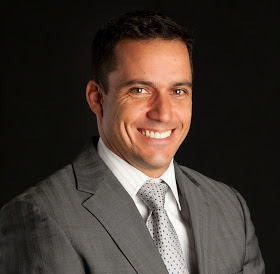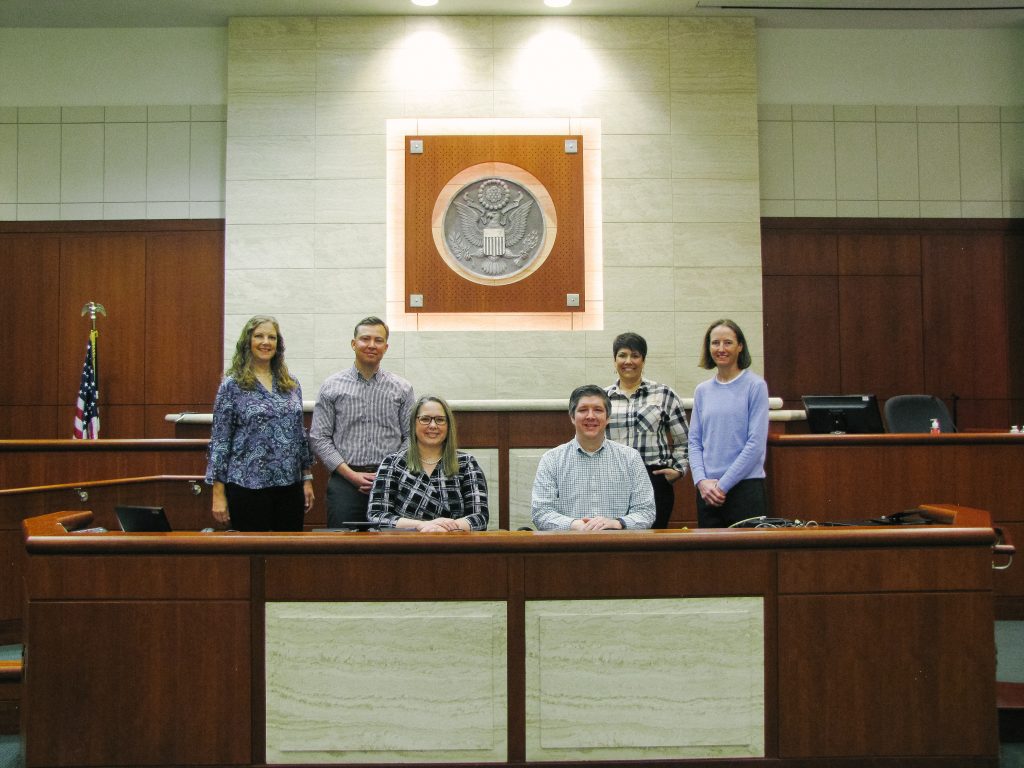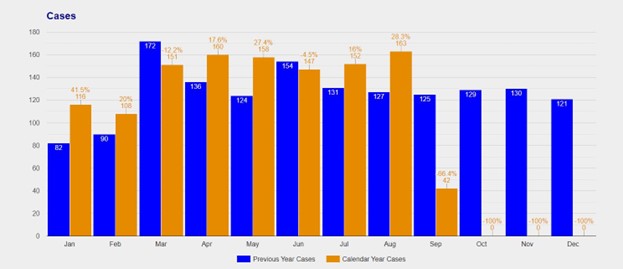Category: Uncategorized
Rule Changes Effective March 1st, 2024
Notice of Judicial Recruitment Workshop – Feb. 14th
A Judicial Recruitment Workshop will be held Wednesday, February 14, 2024, from 12:00 Noon – 1:00 p.m. MST via Zoom. This workshop will provide information to attorneys about what it is like to be on the bench, the selection process, the opportunities available, and benefits of judicial service. If you are interested in attending, please RSVP to IDCourts@idcourts.net and you will be e-mailed a link to the workshop.
The Corporate Transparency Act: An Overview and Its Impact on Lawyers and Law Firms by Tori J. Osler and Jacqueline N. Walton

by Tori J. Osler and Jacqueline N. Walton
It’s here… The Corporate Transparency Act (“the CTA”) is now in effect and its implementation will impact law firms, attorneys, and their personnel who are filing and registering entities on behalf of clients in the United States. Starting January 1, 2024, the CTA will require many companies formed or registered to do business in the U.S. to report the identities of their beneficial owners and company applicants to the U.S. Department of Treasury’s Financial Crimes and Enforcement Network (“FinCEN”). In this article, we will examine what the CTA is, who it applies to, how you can help your clients comply with the same, and some of the immediate practical implications attorneys and law firms should be aware of.
The CTA: What Is It and How Did We Get Here?[i]
The CTA is intended to combat a lack of transparency that may facilitate money laundering, corruption, fraud, terrorism financing, tax fraud, trafficking, and other illicit activities.[ii] The goal of the CTA is to prevent bad actors from utilizing complex corporate structures and shell companies to hide their identities and move money through the U.S. financial system.[iii]
Although the CTA and its requirements will likely surprise a number of our clients, it has been a long time in the making. In 1990, the U.S. joined other countries in forming the Financial Action Task Force (“FATF”), which addresses money laundering and terrorist financing by creating international standards of practice.[iv]Although the U.S. has been an active member of FATF since its inception, we have not kept pace with other countries in implementing the FATF’s recommendations.[v]
The enactment of the CTA and its related regulations – 31 CFR § 1010.100, et seq. (“Regulations”) – are the culmination of a multi-year effort to bring the U.S. into compliance with the FATF recommendations and into alignment with other major Western powers.[vi] The CTA was enacted as a part of the National Defense Authorization Act for Fiscal Year 2021 (“NDAA”).[vii] While President Trump initially vetoed the NDAA, Congress overrode the veto on January 1, 2021.[viii]
The U.S. Department of Treasury (“Treasury”) issued the final Regulations on reporting requirements under the CTA on September 30, 2022.[ix] Thereafter, on December 16, 2022, Treasury issued a notice of proposed rulemaking regarding access to and disclosure of beneficial ownership information.[x]
The Details: Who It Applies to and How to Comply
While the principles and concepts behind the CTA are relatively straight forward, the implementation can be complex.
Under the CTA, only those companies which meet the criteria for a “reporting company” must disclose the identity of their “beneficial owners.”[xi] A “reporting company” under the CTA is any corporation, limited liability company, or “other similar entity” which is formed through filing with a secretary of state (or similar) for domestic entities or through filing in accordance with applicable foreign law and then registering to do business in the U.S. through filing as a foreign entity in accordance with state law.[xii]
While no definition of “other similar entities” currently exists under the CTA or Regulations, FinCEN has indicated that the requirement of “filing” with a secretary of state or foreign government is determinative – indicating that the phrase is intended to be interpreted broadly.
Accordingly, limited, limited liability, and limited liability limited partnerships will probably qualify as “reporting companies;” whereas sole proprietorships, general partnerships, and some common law trusts may not qualify where no filing requirement for these entity types exists.[xiii] Additionally, there are several types of entities that are exempted from the definition, the more critical of which include:
- Publicly traded companies,
- Political organizations,
- Banks and bank-type entities,
- Certain tax-exempt entities,
- Registered investment entities,
- Certain public accounting firms, but not law firms, and
- “Large operating companies.”
While the “large operating company” exception will not apply when such an entity is first formed, it may apply once the entity meets all three of the following requirements: (i) more than 20 employees in the U.S.;[xiv] (ii) physical operating presence in the U.S.; and (iii) previous year’s federal tax filing showing at least $5 million in gross receipts or sales from U.S. sources. This requirement can be met by receipts from subsidiaries or other entities through which the company operates.[xv]
Once a determination is made that an entity is in fact a non-exempt “reporting company,” then the determination must be made as to which owners constitute “beneficial owners” for whom filings with FinCEN are required. Under the CTA, a “beneficial owner” of a reporting company is defined as an individual who – directly or indirectly – through any contract, arrangement, understanding, relationship, or otherwise either:
- Exercises “substantial control” over the entity; or
- Owns or controls not less than 25% of the “ownership interests” of the entity.
“Substantial control” is defined under the Regulations as an individual who: (i) serves as a senior officer, (ii) has the authority over the appointment or removal of any senior officer or a majority of the board of directors; (iii) directs, determines, or has substantial influence over important decisions made by the reporting company, or (iv) has any “other form of substantial control” over the reporting company.[xvi]
With the catchall of “any other form of substantial control,” direct or indirect control, no matter how labeled, will constitute “substantial control” for purposes of the filing requirements.[xvii] Senior officers will likely always be deemed to have substantial control and include positions such as president, chief financial officer, general counsel,[xviii] chief executive officer, chief operations officer, and any other “officer” who perform similar functions.[xix]
Owning not less than 25% of the “ownership interests” in the company is the other standard for being considered a “beneficial owner.” As one can imagine, the definition of “ownership interests” is complex, but is generally defined under 31 C.F.R. §1010.380(d)(2) as including any equity, stock, or similar instrument, interest in a joint venture, any capital or profit interest in an entity, any instrument convertible (with or without consideration into any share) or any warrant or right to purchase, sell or subscribe to a share or interest in a joint venture or an entity, a put, call, straddle, or other option or privilege, or any other instrument, contract, arrangement, understanding, relationship, or mechanism used to establish ownership.
Notwithstanding all of the foregoing, the CTA and the Regulations both recognize certain exceptions to the definition of “beneficial owner” which include: a minor child, an individual acting as a nominee, intermediary, custodian, or agent on behalf of another individual, an employee of a reporting company (provided such person is not a senior officer), an individual whose only interest is a future interest through a right of inheritance, and a creditor of a reporting company.[xx]
Company Applicants. Every reporting company created after January 1, 2024 is required to have a “Company Applicant,” which is defined as any individual who: (a) with respect to a domestic reporting company, directly files the document that creates the domestic reporting company; (b) with respect to a foreign reporting company, directly files a document that first registers the foreign reporting company; and (c) whether for a domestic or a foreign reporting company, the individual who is primarily responsible for directing or controlling such filing if more than one individual is involved in the filing of the document.[xxi] Therefore, under the forgoing description, a legal assistant and the attorney who directs such legal assistant to file or register an Idaho limited liability company qualifies as a Company Applicant.
Reporting to FinCEN. All non-exempt entities filed on or after January 1, 2024, will need to register within 90 days of formation with FinCEN.[xxii] All entities filed before January 1, 2024, must file within FinCEN before January 1, 2025.[xxiii] Reporting is technically the responsibility of the reporting company, but clients will likely rely on their counsel for help with compliance.[xxiv] The first report to FinCEN for an entity must identify each beneficial owner and each Company Applicant by full legal name, birth date, residential or business address, and an identifier number from an “acceptable identification document” (or a FinCEN Identifier Number).[xxv]
Penalties. Penalties for non-compliance are both civil and criminal. Willful violations, providing false information, or failure to file complete and accurate reports, can result in imprisonment up to two years and/or a $500 per day fine, up to $10,000. Unauthorized disclosure or unauthorized use of sensitive beneficial owner information can result in $500 per day penalties up to $250,000 and/or five years’ imprisonment – and if part of a larger pattern, penalties up to $500,000 – and 10-years’ imprisonment are included.[xxvi]
The Immediate Practical Implications on Law Firms
The CTA represents one of the most significant changes to the laws regulating small businesses in recent times. The new law will impact millions of companies across the U.S. As of the time of drafting this article (before January 1, 2024), the full spectrum of practical implications and impacts of the CTA on lawyers remains largely unknown.[xxvii] However, lawyers from solo practitioners to the largest international firms will be expected by clients to create entities, bring existing entities into compliance, and advise and assist clients with their CTA filings and updating requirements. These implications will impact lawyers beyond the corporate practice. As such, lawyers and law firms in all practices will need to know and consider the requirements of the CTA and its implications.
From a practical standpoint: lawyers should be thinking about meeting these ongoing compliance obligations; including whether requirements should be placed on clients and underlying beneficial owners to provide all required information to the firm registering entities on a client’s behalf and what to do when individual owners refuse to comply. Other items for consideration include client intake questions, ethics and conflict searches, and modifying standard engagement letters to delineate the scope of attorney’s duties with respect to advising on the CTA, forming entities, assisting with FinCEN filings, evaluating issues with existing entities, and assessing whether updates to filings will be required due to income levels of the entity, number of employees, or change in ownership percentages and control.
Lawyers should also consider including clauses in operating agreements, shareholder agreements, joint venture agreements, and other corporate governance documents to ensure compliance with the CTA and to include remedies for non-compliance of the same. Finally, consideration should be paid to whether leases, loan documents, trust documents, estate planning documents, and other agreements should also include certain provisions to ensure compliance with CTA. Likewise, law firms should also consider limiting the number of personnel and staff filing formation documents with state agencies so that the number of Company Applicants within the law firm are limited and experienced.

Tori J. Osler
Tori J. Osler is an associate at Holland & Hart LLP. She counsels clients in commercial real estate development, real estate finance, and multifamily and affordable housing projects. Tori is a member of the firm’s CTA Committee which will serve as resource for others within Holland & Hart LLP for the creation of new entities after January 1, 2024.

Jacqueline N. Walton
Jacqueline N. Walton is a real estate partner with Holland & Hart LLP. She focuses her practice on commercial real estate on acquisitions and sales, development, leasing, financing, and zoning and land use.
[i] The authors wish to recognize and thank: Marcus Painter and Jordan J. Bunch of Holland & Hart LLP for their July 2023 Colorado Real Estate Symposium Paper and Presentation entitled: “Tick, Tick, Tick, Boom! the Corporate Transparency Act is Upon Us,” which paper was relied upon in preparing this article.
[ii] See 31 U.S.C. § 5311(1)-(5).
[iii] See 31 U.S.C. § 5311(1)-(5).
[iv] https://home.treasury.gov/policy-issues/terrorism-and-illicit-finance/financial-action-task-force; https://www.fatf-gafi.org/en/countries/detail/United-States.html.
[v] https://www.fatf-gafi.org/en/countries/detail/United-States.html.
[vi] At least 30 other countries have adopted some form of register for beneficial ownership information. See 87 Fed. Reg. 59500 (https://www.federalregister.gov/documents/2022/09/30/2022-21020/beneficialownership-information-reporting-requirements).
[vii] See 134 Stat. 3388, Public Law 116-283- Jan. 1, 2021.
[viii] https://www.reuters.com/business/aerospace-defense/trump-vetoes-major-defense-bill-despite-strong-backing-congress-2020-12-23/.
[ix] See 87 Fed. Reg. 59498-59596 (https://www.federalregister.gov/documents/2022/09/30/2022-21020/beneficial-ownership-information-reporting-requirements).
[x] See 86 Fed. Reg. 77404-77457 (https://www.federalregister.gov/documents/2022/12/16/2022-27031/beneficial-ownership-information-access-and-safeguards-and-use-of-fincen-identifiers-for-entities).
[xi] See 31 CFR§1010.380(c)(1) and §1010.380(d).
[xii] See 31 CFR §1010.380(c)(1).
[xiii] https://www.federalregister.gov/documents/2022/09/30/2022-21020/beneficial-ownership-information-reporting-requirements.
[xiv] FinCEN refers to IRS regulations for determination of whether an employee is “full time”–generally considered 30 hours per week or 130 hours per month. FinCEN’s guidance on when this number is evaluated (snapshot or average or other) is of little use. 87 Fed. Reg. 59543 (https://www.federalregister.gov/documents/2022/09/30/2022-21020/beneficial-ownership-information-reporting-requirements).
[xv] A newly formed entity will not be able to qualify for this exception in its first tax year simply because it will not have $5 million in gross receipts on a prior year’s tax return.
[xvi] See 31 CFR §1010.380(d)(1).
[xvii] The Regulations spell this out in more detail with examples of what constitutes exercising control, such as having board representation, rights related to financing, control over controlling entities, and more. See 31 CFR §1010.380(d)(ii).
[xviii] “FinCEN considers the role of general counsel to be ordinarily more substantial [than a treasurer or secretary role] and has therefore retained this role as part of the definition of ‘senior officer.’” 87 Fed. Reg. 59526 (https://www.federalregister.gov/documents/2022/09/30/2022-21020/beneficial-ownership-information-reporting-requirements).
[xix] See 31 CFR §1010.380(f)(8).
[xx] See 31 CFR §1010.380(e).
[xxi] Id.
[xxii] See 31 CFR §1010.380(a)(1)(i) (A)–(B); (ii)(A)–(B).
[xxiii] See 31 CFR §1010.380(a)(1)(iii).
[xxiv] The forthcoming forms and protocols for filing the required information with FinCEN will further inform whether filings on behalf of reporting companies can be done by law firms, or law firms will merely assist the client with filing with FinCEN.
[xxv] 87 Fed. Reg. 59546 and 59507. See also: https://www.federalregister.gov/documents/2022/09/30/2022-21020/beneficial-ownership-information-reporting-requirements.
[xxvi] See 31 CFR §1010.380(g).
[xxvii] Given how new the CTA is, regulations and rules may change between the date our article was drafted and printing of the same.
Letters to the Editor
Letter to the Editor: Cox
Dear Editor,
I read the article “Breaking the Chains of Stigma: Safeguarding Substance-Using Parents and their Children in Civil Legal Matters” with more than a little dismay and trepidation.
The article repeatedly refers to “substances,” leaving it unclear as to whether marijuana/THC usage is the primary “substance” discussed or even one of them. This is an important distinction at the outset. I believe our judges do an excellent job of examining the problems before them and distinguishing between so-called “hard drug” addiction and recreational marijuana use.
More concerning is the article’s focus on the victimhood of addicts, a focus which is mis-directed. The article is about child cases, and a child’s needs and safety are paramount. The author claims that drug use is “often misinterpreted and stigmatized by society at large.” No evidence, even anecdotal, is provided to suggest our judges are neglecting their duty to rule in the best interest of the children before them, by stigmatizing addicts. The emphasis in the criminal justice system on the use of specialty courts, rehabilitation, and recovery also undercuts the premise that drug addicts are being punished/stigmatized in society and/or in child welfare/custody cases.
The article implies that children might not need protection from a custodial parent using hard drugs such as methamphetamine, heroin, or cocaine. It resurrects the lie uttered by many addicts that they are just social or occasional users. In my estimation it is nonsensical and even more harmful to describe protecting children from the scourge of addiction as “unwarranted scrutiny and judgment.” This article comes at a time when tens of thousands of people are dying of overdoses, largely due to the Fentanyl epidemic. Our judges and lawyers are well aware of these problems, as they witness the consequences of addiction. Most of the time, our legal professionals are compassionate towards parents and loving/protective towards children.
Sincerely,
Neil Presley Cox
Clarkston, Washington
Letter to the Editor: Dominick
Dear Ms. Welfley,
I read with interest Judge Robert L. Jackson’s article on “Civility in the Profession: Is it Gone Forever” contained in the November/December 2023 edition of The Advocate. In his article, he discussed the adoption by the Idaho Bench and Bar of the “Standards of Civility in Professional Conduct.” He appeared to have some questions about the adoption of the civility rules. Other members of the Bench and Bar might also wonder about the history of the rules.
I can attest to the history and reasons for the adoption of the professional civility rules. I was admitted to the Idaho Bar in 1982. By the time I became Chair of the Bar’s Professionalism and Ethics Section (PRE) I had grown tired of the lack of civility in the legal profession. I proposed to the PRE Committee, which included Past-Chair Judge J. William Hart and Vice-Chair Dick Fields and other great lawyers on the committee, that we draft civility rules for the bench and bar. With the committee’s unanimous support, I research the civility rules of several states and proposed that we use those of the Western District of Michigan as a template. Dick Fields and I consulted with many judges and lawyers about the rules. We made any revisions we felt were necessary. Interestingly, not one person with whom we consulted said that civility rules were not needed.
In 2001, we submitted the rules to the Bench and Bar for adoption. I have attached my letter to the Bench and Bar stating the reasons why civility rules should be adopted in Idaho and asking for their support. New Chair Dick Fields and I then attended several Bar Commission resolution roadshows concerning the adoption of the rules. There was unanimous support for the rules by the Bench and the Bar. (As an aside, at one of the Commission meetings I did get into an interesting discussion with Judge Ron Wilper concerning the meaning of the phrase, “First, let’s kill all the lawyers.” (William Shakespeare’s Henry VI).)
The Civility Standards were adopted in 2001. I have attached the reasons why the rules were adopted here. Perhaps it is time, two decades later, to re-examine whether additional attention to these rules is necessary.
Very truly yours,
Thomas B. Dominick
Boise, Idaho
Mechanics’ Liens and the Priority Dilemma by John R. Jameson

by John R. Jameson
Idaho mechanics’ lien statutes reflect the public policy favoring protection of construction contractors, materialmen, and providers of certain professional services to receive renumeration for improvements made to real property. In essence, a right to a mechanics’ lien evens the playing field between property owners and persons improving the real property. Without the mechanics’ lien statutorily created security interests, builders, materialmen, and other contractors would only have judicial remedies of a breach of contract, or other operable cause of action, to obtain an enforceable right to collect monies owed. In the meantime, property owners would be able to profit from the property improvements without any consideration to the contractor performing the property improvements. The mechanics’ lien statutes change this dynamic by providing an immediate lien to secure payment for the work and services performed.
Application of Idaho’s mechanics’ liens statutes requires a thorough analysis of the law and the facts giving rise to a mechanics’ lien. Attorneys should be aware of several factors when dealing with mechanics’ liens. The actual work performed and the location thereof is important information when considering the property, or interest therein, subject to a potential mechanics’ lien. Furthermore, determining the priority of a mechanics’ lien is a dilemma that should be resolved to protect clients’ lien rights. Failure to address the issues of ownership of the property and the priority of a mechanics’ lien may result in substantial negative impacts on the interests of many of the parties involved in real estate transactions. This article will identify some of the considerations that attorneys should discuss with their clients, as well as offer practical steps that can be taken to perfect and protect the priority of a mechanic’s lien.
A Mechanics’ Lien is an Inchoate Lien
Mechanics’ liens “are preferred to any lien, mortgage, or other encumbrance, which may have attached subsequent to the time when the building, improvement or structure was commenced, work done, equipment, materials or fixtures were rented or leased, or materials or professional services were commenced to be furnished […].”[1]
Mechanics’ liens have priority over any lien, mortgage, or other encumbrance that attached subsequent to, or was unrecorded, or of which the lienholder had no notice as of (as applicable) the commencement of physical work; the date that materials were delivered, leased, or rented; or the date that “materials or professional services were commenced to be furnished.”[ii] The Idaho Supreme Court has consistently construed this statute to mean that each contractor, subcontractor or supplier has independent priority based upon when their specific work, services, or materials were supplied to the property or project.[iii]
For most persons with lien rights under this statute, the lienholder’s priority will relate back to the date that the contractor, subcontractor, or materialman physically commenced work or supplied materials to the property.[iv] A lien may encompass the entirety of the work performed under a single contract.[v] Therefore, pauses in work, waivers of lien claims, or even acceptance of partial payments for work performed may not affect the priority date for that lien claimant for work performed under a single contract. If work is performed or services are rendered under separate contracts, whether by the same or unrelated contractors, subcontractors or materialmen, the priority date for each contract and work conducted thereunder is determined independently of one another. [vi] The priority date for a resulting mechanics’ lien will be set by the commencement of work by each individual contractor, subcontractor, or materialman and not the execution of each provider’s contract for work to be performed.
Furthermore, the Idaho Supreme Court recently held that the priority of an engineer’s lien under I.C. § 45-501 relates back to the date “when the engineer commenced to furnish ‘any authorized, professional services’ under the contract regardless of where the services were rendered” and not to the date that physical work was commenced on the property at issue.[vii] By extension, this would also include work performed by a licensed surveyor in relation to the property.[viii] Therefore, certain mechanics’ lien rights may have priority over subsequent encumbrances, even if there has been no physical work commenced on the property. Thus an inchoate lien may have priority regardless of whether an actual claim of lien has been recorded in the county real property records.
Perfection of Lien
A person claiming a mechanics’ lien must file a claim of lien with the county recorder within ninety days after that claimant’s substantial completion of the labor or services or furnishing of materials.[ix] The Idaho Supreme Court has interpreted “completion” in this statute to mean “substantial completion” of the claimant’s work, and “trivial work done or materials furnished after the contract has been substantially completed will not extend the time in which a lien can be filed.”[x] Failure to properly record a claim of lien within this window may result in a total loss of lien rights against the property, though the claimant likely retains a personal action for collection of the debt.
The claim of lien is effective for six months after the claim of lien is filed, unless court proceedings are commenced to enforce the lien within that six-month period.[xi] If payment is made on the account or the lienholder extends credit with a set expiration date, the lien may be extended for an additional six months after the date of such payment or expiration of extension of credit so long as the payment or extension of credit is endorsed on the recorded claim of lien.[xii] The lien of a final judgment from a lien foreclosure action will be enforceable for ten years from the date of the judgment.[xiii]
Property Rights Subject to a Mechanics’ Lien
Idaho Code § 45-501 outlines a party’s right to lien real property for which labor, materials and/or services have been performed. The code section states in part, “[The contractor] has a lien upon the same for the work or labor done or professional services or materials furnished, whether done or furnished at the instance of the owner of the building or other improvement or his agent.”[xiv] Idaho Code § 45-505 defines the real property, including the “ownership” of the property less than fee simple, that is potentially subject to mechanics’ liens within the State of Idaho. The property interest subject to the lien only extends to the interest the person requesting the services, work, or materials has in the land.[xv] For example, if the person requesting such services, work, or materials only holds a leasehold interest, the lien will only attach to the leasehold interest.[xvi]
There are instances where a less-than-fee interest holder could potentially be considered an agent of the owner and bind the fee interest to mechanics’ liens. In such instances, the property owner must in some manner indicate that the agent is to act for him, and the agent must act or agree to act on his behalf and subject to his control.[xvii] However, merely acting in concert with one another, without a right of control, does not give rise to an agency relationship.[xviii] In most matters concerning the creation of an agency relationship, whether such relationship exists is a question of fact to be judicially determined.[xix]
The claimant has the right to lien all the “land upon which or in connection with which” the services were rendered, or the building, improvement, or structure is constructed, plus a “convenient space about the same” if the person that caused the services to be rendered or work to be performed also owns the adjacent land.[xx] “What area of land is subject to the lien in a given case largely depends upon the character of the improvement.”[xxi] “The question is not so much as to the amount of land required for the area to be occupied by the [improvement], but rather as to the amount of land to be improved and benefitted by the creation and use of the [improvement].”[xxii] “[T]he amount of land necessary for the convenient use and occupation of the property to be sold under the terms and conditions of the lien and judgment” must be determined by the court decreeing foreclosure.[xxiii]
Tenancy in Relation to Mechanics’ Liens
Real property rights in Idaho consist of the proverbial “bundle of sticks” taught during the first year of law school. One of the lesser explored or considered “sticks” is the property rights belonging to a tenant or lessee of real property. As a general rule, lessees hold a property interest less than that of property owner’s fee interest. This leasehold interest, as it is commonly referred, is limited in scope and duration. It also generally prohibits lessees from transferring or affecting the freehold estate possessed by the property’s vested owner.
One area where this general rule does not automatically apply is when tenant causes certain improvements to be made to the real property. The common law rule is that contractors “cannot recover for improvements made to a landlord’s property absent an agreement to reimburse ….”[xxiv] However, when the improvements and/or repairs are made “beyond what mere tenants typically make to a real property,” such as electrical improvements and tree removal, a fee owner cannot generally avail themselves of such improvements without some type of restitution to the tenant upon the termination of the tenancy.[xxv] Such an instance begs the question of whether a contractor, material supplier, and/or a professional service provider can encumber a landlord’s interest in the property should a tenant fail to pay for the improvements.
"Such an instance begs the question of whether a contractor, material supplier, and/or a professional service provider can encumber a landlord’s interest in the property should a tenant fail to pay for the improvements."
The facts of Tri-Circle v. Brugger Corp are instructive in determining an agency relationship in an owner-tenant context. That case concerned a farmer landlord tenant arrangement, in which the tenant was granted express authority to purchase irrigation materials and retain workers to perform certain repairs to the irrigation system. Subsequent to the authorized repairs being completed, which were paid for by the landlord, the tenant proceeded to charge additional expenses to the landlord’s account for further irrigation upkeep. At trial, there was no evidence presented that demonstrated the third-party vendor should have understood the charges incurred by the tenant were for irrigation start-up costs only, and the tenant was therefore cloaked under express, implied, and apparent authority to continue to charge the account for irrigation system materials and repairs.[xxvi]
Although Tri-Circle did not involve an issue of mechanics’ liens being charged against the owner’s real property, Idaho Courts have directly defined which acts or implications would give rise to a tenant being treated as an agent for purposes of mechanics’ lien attachments.
A tenant or lessee is not generally considered the agent of the lessor within the interpretation of the mechanics’ lien law merely by virtue of the relationship of landlord and tenant, and a tenant or lessee cannot subject the interest of his landlord to a mechanics’ lien by reason of the tenant’s contract with a materialman or laborer, unless the owner does some act in ratification of, or consent to the work done and the furnishing of the material or labor.[xxvii]
Subsequent Idaho case law clarifies that “consent for certain repairs specified in the lease to be made by the lessee was not sufficient to extend that materialman’s lien to the lessor’s interest.”[xxviii] “The estate or property of a lessor is not subject to a mechanics’ lien for improvements contracted for by his lessee unless the lessor has made him his agent or otherwise conferred the requisite authority on him, or ratified his acts, or is estopped to deny the validity of the lien.”[xxix]
In Idaho Lumber, a property lessee contracted with Idaho Lumber to remodel a building and construct a parking lot on the property. During construction on the property, the lessee made unilateral changes to the construction plans. Although the property owner visited the site during the construction, the facts showed that the lessee had complete control over the work performed on the property. Lessee subsequently defaulted on both the construction contract and the property lease. The contractor filed a mechanics’ lien against the property and sued the property owner to foreclose on the lien, amongst other claims. The court ultimately held that the “authorization” given by the property owner for the property alterations really amounted only to consent to have the lessee expend money on the property remodeling efforts and was therefore deemed insufficient to support a lien on the fee interest.[xxx]
If the landlord maintains control over property improvements requested by a tenant, Idaho Courts have deemed the tenant to be the agent of the landlord. In such a limited instance, the owner’s fee interest in the property may be subject to the lien.[xxxi] However, merely consenting to a tenant conducting the property improvements is generally not considered sufficient control to subject the fee interest to such a mechanics’ lien.[xxxii] As an example, many commercial leases will contain terms allowing for tenant improvements to the property, but only after obtaining landlord approval of the plans. This hypothetical is contrary to the facts of Idaho Lumber in that the landlord still holds oversight and approval rights as opposed to merely authorizing the tenant to construct the improvements.
Whether a tenant’s property improvements subject the property to a lien against the owner’s fee interest is a highly fact-specific analysis. The facts must be analyzed in every instance whether tenant improvements are being, or are contemplated to be, performed on the property. Items to consider during the analysis include, but are not limited to, the lease agreement, indications of actual control by the landlord, and/or tenant reimbursement terms.
Lender Protections Against Inchoate Mechanic’s Liens
Idaho does not have any statutory protections for the benefit of mortgagees or bona fide purchasers against valid, prior mechanic’s liens other than notice of the lien through a title search. However, there are still a few methods to mitigate mechanic’s lien risk in Idaho.
Lien Waivers and Subordinations
Express waivers of mechanics’ lien rights are valid and enforceable in Idaho so long as they are supported by adequate consideration.[xxxiii] “[W]here a lien waiver is not incorporated as part of a more comprehensive agreement, the lien waiver must be supported by independent valuable consideration.”[xxxiv] For example, when there is work performed outside the scope of the construction contract by a sub-contractor, there will likely need to be additional consideration to support a waiver from the subcontractor.[xxxv]
Idaho does not have statutory forms of or requirements for mechanics’ lien waivers, and waivers are customarily drafted and provided by contractors. While there is no required language, the intent to waive must be clear: “In order to establish a waiver, the intention to waive lien rights must clearly appear, and a waiver of the lien will not be presumed or implied, contrary to the intention of the party whose rights would be injuriously affected thereby.”[xxxvi] Lien waiver and subordination agreements must be so unambiguous to evidence the parties’ intent to waive, alter and/or subordinate the effective priority date of the subordination.[xxxvii]
Express subordinations of mechanic’s and materialmen’s lien rights to later-recorded security instruments are also enforceable in Idaho.[xxxviii] The subordination agreement will only establish priority as between the parties to the agreement and does not waive the subordinating party’s right to lien the property. Regardless, these agreements can be a useful tool to insure the relative priority of a security instrument in Idaho.
"The facts must be analyzed in every instance whether tenant improvements are being, or are contemplated to be, performed on the property."
Posting a Bond
If a mechanic’s or materialman’s claim of lien is recorded against real property, I.C. § 45-518 provides an expedited procedure for release of the lien by posting a bond with a court of competent jurisdiction. While a party responsible for payment may occasionally be reluctant to use this process for fear of admitting responsibility for payment, Idaho law is well established on this point: “the lien release bond is merely meant to act as substitute security for the real property and does not otherwise affect the rights of the interested parties.”[xxxix]
Title Insurance
The ability to ascertain the relative lien priority is an important component for a title insurance company in underwriting the issuance of a title policy for a construction loan. Both the ALTA 2006 and 2021 loan policies may provide coverage for mechanics’ lien risks due to lack of priority of the insured lender’s mortgage or deed of trust. Coverage of mechanics’ lien risks may also be provided through particular endorsements to the title policy. Due to the potential liability of insuring a lender’s priority, even in known sitiautions where it may not exist, title insurance companies will generally take great care in underwriting mechanics’ lien risks.
Conclusion
In the context of mechanic’s liens, legal representation of property owners, contractors or lenders mandates a highly factual, specific analysis in determining whether any work performed on the property gives rise to mechanic’s liens. Unlike many property encumbrances, mechanics’ liens are inchoate liens, which dictates a duty to analyze when and if a lien attaches. Further, attorneys should consider whether non-owner parties have caused any improvements to the property, which can potentially encumber the fee owner’s interest. As for preparing mechanic’s lien filings on behalf of contractor clients, strict compliance is required. Practitioners should be well versed in the nuances of I.C. § 45-501, et seq. before commencing representation concerning the perfection, court foreclosure actions, and lien priority rights.
Note: Nothing contained in this article is to be considered as the rendering of legal advice for specific cases, and readers are responsible for obtaining such advice from their own legal counsel. This article is intended for educational and informational purposes only.

John R. Jameson
John R. Jameson has spent his legal career specializing in real property matters. Currently, John is Underwriting Counsel for First American Title assigned to Idaho, Montana and Oregon. John is an active member of the Idaho State Bar, serving on the Lawyer Assistance Program Committee, Chairman of the Unauthorized Practice of Law Committee, and is the Secretary/Treasurer of the Real Property Section. John is also a 2023 graduate of the Idaho Academy of Leadership for Lawyers. In his spare time, John enjoys running, camping, fishing, and anything that gets him outside.
[1] Idaho Code § 45-506.
[ii] Id.
[iii] See Ultrawall, Inc. v. Washington Mutual Bank, FSB, 135 Idaho 832, 25 P.3d 855 (2001) (Emphasis added); Pacific States Sav. & Loan & Bldg. Co. v. Dubois, 11 Idaho 319, 83 P. 513 (1905).
[iv] See Credit Suisse AG v. Teufel Nursery, Inc., 156 Idaho 189, 199, 321 P.3d 739, 749 (2014), citing Terra-West, Inc. v. Idaho Mut. Trust, LLC 150 Idaho 393, 400, 247 P.3d 620, 627 (2010).
[v] Terra-West, Inc. 150 Idaho at 400, 247 P.3d at 627.
[vi] Credit Suisse, 156 Idaho at 197, 321 P.3d at 747.
[vii] Hap Taylor & Sons, Inc. v. Summerwind Partners, LLC, 157 Idaho 600, 607, 338 P.3d 1204, 1211 (2014).
[viii] See I.C. § 45-501.
[ix] I.C. § 45-507.
[x] Baker v. Boren, 129 Idaho 885, 895, 934 P.2d 951, 961 (1997).
[xi] I.C. § 45-510(1).
[xii] Id.
[xiii] Id; See also I.C. § 10-1111.
[xiv] I.C. § 45-501 (Emphasis added).
[xv] I.C. § 45-505.
[xvi] Nelson Bennett Co. v. Twin Falls Land & Water Co., 14 Idaho 5, 17-18, 93 P. 789, 792 (1908).
[xvii] Herbst v. Bothof Dairies, 110 Idaho 971, 973, 719 P.2d 1231,1233 (1986).
[xviii] Id. at 736, 366 P.3d at 1096.
[xix] John Scowcroft & Sons Co. v. Roselle, 77 Idaho 142, 146, 289 P.2d 621, 623 (1955).
[xx] Id.
[xxi] Durfee v. Parker, 90 Idaho 118, 123, 410 P.2d 962, 964 (1965).
[xxii] Id.
[xxiii] Robertson v. Moore, 10 Idaho 115, 77 P. 218 (1904), overruled on other grounds by Dover Lumber Co. v. Case, 31 Idaho 276, 170 P. 108 (1918).
[xxiv] Asher v. McMillan, 169 Idaho 701, 706, 503 P.3d 172, 177 (2021).
[xxv] Id. at 708, 503 P.3d at 179.
[xxvi] Tri-Circle, 121 Idaho at 954, 829 P.2d at 544.
[xxvii] Bunt v. Roberts, 76 Idaho at 161, 279 P.2d at 630 (Emphasis added).
[xxviii] Idaho Lumber, 109 Idaho at 742, 710 P.2d at 652.
[xxix] Id. at 743, 710 P.2d at 653.
[xxx] Id.
[xxxi] Bunt v. Roberts, 76 Idaho 158, 161, 279 P.2d 629, 630 (1955).
[xxxii] Idaho Lumber v. Buck, 109 Idaho 737, 742, 710 P.2d 647, 652 (1985).
[xxxiii] Pierson v. Sewell, 97 Idaho 38, 42-43, 539 P.2d 590, 594-95 (1975).
[xxxiv] SI Constr., LLC v. Ridge at Black Rock Bay, Inc., 2011 Ida. Dist. LEXIS 19, *23.
[xxxv] See eg. G.R. SPonaugle &Sons, Inc. v. McKnight Construction Co. 304 A.2d 339, 345 (Del. Sup. Ct. 1973).
[xxxvi] Smith v. Faris-Kesl Const. Co., 27 Idaho 407, 150 P. 25, 32 (1915).
[xxxvii] See e.g. In Re Tamarack Resort foreclosure and Related Proceedings, Valley County Case No. CV-08-114C, pp. 12 (ID 4th Dist., 2009).
[xxxviii] See, e.g., Am. Bank v. Wadsworth Golf Constr. Co. of the Southwest, 155 Idaho 186, 307 P.3d 1212 (2013).
[xxxix] Wadsworth Golf, 155 Idaho at 192, 307 P.3d at 1218.
Changes In The 2021 ALTA Standard Form Title Insurance Policies by S. Craig Adams

by S. Craig Adams
On July 1, 2021, the American Land Title Association (“ALTA”) formally adopted substantial changes to its standard title insurance policy forms.[i] On July 1, 2021, it published these new forms for official use.[ii] ALTA is the national trade association representing the title insurance industry.[iii] One of its core functions is to develop and publish through its Title Insurance Forms Committee standard title insurance forms that title insurers and settlement providers across the United States can use.[iv]
Foremost of its standard forms are its uniform policies of title insurance.[v] First published in 1970, ALTA’s policies of title insurance protect the ownership of real property in an Owner’s Policy and the money lent to acquire or improve such real property in a Loan Policy.[vi] ALTA periodically revises its forms to “reflect changes in the marketplace brought about by evolving business practices, expectations of insureds, laws, regulations and legal decisions.”[vii] Since their first publication, ALTA has formally revised its standard title insurance policies only a handful of times. Before the 2021 revisions, ALTA’s most recent changes were completed in 2006 when it rewrote entirely all its standard forms.[viii]
The main drivers of ALTA’s 2021 revisions to its standard Owner’s and Loan title policies were the creation of the Consumer Finance Protection Bureau under the Dodd-Frank Wall Street Reform and Consumer Protection Act[ix]; the adoption in a significant number of jurisdictions of remote online notarization practices[x]; the legislative focus in a growing number of states addressing publicly recorded historical documents containing illegal discriminatory restrictive covenants[xi]; and the United States Supreme Court’s decision in McGirt v. Oklahoma[xii], in which the Court confirmed that the boundaries of the reservation of the Muscogee (Creek) Nation had never been disestablished by the United States Congress and remains in existence. The McGirt decision is significant because it raises broad questions about tribal reservation disestablishment jurisprudence nationwide and about governmental and regulatory jurisdiction of historic tribal lands.
ALTA’s 2021 Title Policies
Modernizing Coverage by Clarifying Certain Covered Risks and Adding Entirely New Covered Risks to the Policies
ALTA changed every section of its Loan[xiii] and Owner’s[xiv] title insurance policies with its 2021 revisions. Throughout, ALTA prioritized making changes that clarify what they are intended to cover, by adding new definitions and modifying others, and what they are not intended to cover by modifying or adding to the Covered Risks, the Exclusions, the Conditions, and Schedules A and B of the policies.
Both the new Owner’s Policy and Loan Policy begin with a new introductory clause to acknowledge the use of electronic documents and electrically obtained and acknowledged signatures, and to clarify that the insurance company will not deny liability solely because they were issued or obtained electronically.[xv] [xvi]
Covered Risk 2: Owner’s and Loan Policies
The 2021 ALTA Policies Add New Language Dealing with Remote Online Notarizations
Covered Risk 2 in both the Loan Policies[xvii] and Owner’s [xviii] is modernized by express mention of remote online notarization and repudiation of an electronic signature as examples of title defects that can cause a covered loss under the policy. Additionally, survey coverage under Covered Risk 2 has been enhanced by expressly including that any boundary line overlaps that appear on a survey and which are not otherwise excepted are title defects that can trigger a covered loss under the policy.[xix]
Covered Risks 5, 6, 7 and 8: Owner’s and Loan Policies
The ALTA 2021 Policies Add New Defined Terms “Enforcement Notice” and “PACA-PSA Trust” and Revise Defined Term “Public Records”
Both the Owner’s and Loan Policies include a new defined term “PACA-PSA Trust”, and a corresponding new Covered Risk 8 that insures against loss arising from the enforcement of a PACA-PSA Trust to the extent of the enforcement described in an “Enforcement Notice” and recorded in the “Public Records”.[xx] [xxi]
The Perishable Agricultural Commodities Act[xxii] (“PACA”), and the Packers and Stockyards Act[xxiii] (“PSA”) (together, the “Acts”) each create a floating, non-segregated trust for the benefit of the unpaid producers, suppliers, and sellers of the products defined in the Acts (e.g., fresh and frozen fruits and vegetables, in the case of PACA; poultry products, livestock, dairy, and meat products, in the case of PSA) against the assets of buyers or dealers, including assets acquired with proceeds derived from the sale of covered products. These trusts can exist as an inchoate (i.e., unrecorded) claim against the business operations of a buyer or dealer that can create a defect in the title to real property.
"Since their first publication, ALTA has formally revised its standard title insurance policies only a handful of times."
The Owner’s and Loan Policies include a new defined term “Enforcement Notice” and revise the defined term “Public Records.” These are important new terms for Covered Risks 5, 6, 7, and 8 in both.
“Enforcement Notice” is defined as a “document recorded in the Public Records that describes any part of the Land and . . . is issued by a governmental agency that identifies a violation or enforcement of a law, ordinance, permit, or governmental regulation; is issued by a holder of the power of eminent domain or a governmental agency that identifies the exercise of a governmental power; or asserts a right to enforce a PACA-PSA Trust.”[xxiv] [xxv]
The revised definition of “Public Records” distinguishes between those public records that are intended to be used for limited purpose in title insurance policies and other governmental records that are not intended as such, and which are construed generally as being outside of the policy’s intended scope.[xxvi] [xxvii] The newly defined “Enforcement Notice”, together with the revised “Public Records” definition, represent a much-needed clarification as to what form of notice causes a covered loss, and where such notice must be recorded to trigger coverage unless excepted from coverage in Schedule B.
Covered Risk 10: Loan Policy
The 2021 ALTA Loan Policy Clarifies Those Components of a Loan That a Title Policy Covers
Covered Risk 10 in the new Loan Policy was overhauled to clarify the specific components of Indebtedness that benefit from priority coverage for the Insured Mortgage.[xxviii]
The 2006 Loan Policy addressed the lack of priority of the Insured Mortgage lien against other liens on the Title but, as with all of the Covered Risks, its language was subject to Exclusion 3(d) for “[d]efects, liens, encumbrances, adverse claims, or other matters . . . (d) attaching or created subsequent to Date of Policy . . . .”[xxix] This left open the question of whether principal disbursed subsequent to Date of Policy (other than construction loan advances addressed by Covered Risk 11(a)) were actually included as part of the priority coverage under Covered Risk 10. The ALTA Forms Committee wanted lender customers to understand this question and seek an endorsement, such as the ALTA 14 (Future Advance – Priority) or ALTA 14.1 (Future Advance – Knowledge), whichever is most appropriate in light of the terms of the subject loan and applicable state law, to be confident in the scope of the priority coverage provided by Covered Risk 10.[xxx] The Forms Committee reworded the 2021 Loan Policy to resolve the uncertainty by driving lender Insureds to seek an appropriate endorsement whenever a loan that is not a construction loan contemplates future advances of principal.[xxxi]
Covered Risk 13: Loan Policy / Covered Risk 9: Owner’s Policy
The 2021 ALTA Policies Improve Coverage for Issues Related to Creditors’ Rights Against Real Property
Covered Risk 13 in the Loan Policy, and Covered Risk 9 in the Owner’s Policy, sometimes referred to as “back-chain creditors’ rights coverage,” affords protection to the Insured against the risk that a transaction prior to the one for which the Loan Policy or Owner’s Policy is being issued is challenged on the basis that it constituted a fraudulent conveyance, fraudulent transfer, or a preferential transfer, under federal bankruptcy, state insolvency, or similar state or federal creditors’ rights laws.[xxxii]
Section 550(a) of the Bankruptcy Code authorizes an alternative remedy in allowing the bankruptcy trustee to “recover, for the benefit of the estate, the property transferred, or, if the court so orders, the value of such property . . . .”[xxxiii] The new Covered Risk improves back-chain creditors’ rights coverage by expressly stating that protection against loss resulting from “the effect of a court order providing an alternative remedy” now applies to both subsections of this Covered Risk.[xxxiv] [xxxv]
Additionally, the back-chain creditors’ rights coverage has been updated to expressly address the risk of a challenge to a prior transaction based on it being voidable under the Uniform Voidable Transactions Act. The National Conference of Commissioners changed the Uniform Fraudulent Transfer Act to the Uniform Voidable Transactions Act (“UVTA”) in 2014[xxxvi] and numerous states have enacted the UVTA as part of applicable state creditors’ rights law.[xxxvii] The 2021 revision modernizes coverage by expressly referencing the UVTA within this Covered Risk.[xxxviii]
New Exclusions and Clarity on Certain Others from Coverage
Two new Exclusions have been added with the 2021 Owner’s and Loan Policy revisions. The remainder of the revisions to this section are intended to keep the Exclusions internally consistent with modifications made to the corresponding Covered Risks and Conditions sections of the policies.
First is the governmental police power exclusion (Exclusion 1.b). The 2021 revision adds the words “forfeiture,” “regulatory,” and “national security” power to the list to clarify that these are intended to be excluded from coverage and are within the scope of Exclusion 1.b.[xxxix] Note, however, that a concluding sentence in Exclusion 1 of the 2021 policies makes clear that the Exclusion “does not modify or limit the coverage provided under Covered Risk 5 or 6”.[xl] So, as was the case with Exclusion 1 of the 2006 policies, the 2021 policies do insure against loss or damage arising from the enforcement of a governmental forfeiture, police, regulatory, or national security power to the extent of the enforcement described in an “Enforcement Notice” that, as defined, is recorded in the “Public Records,” and is not excepted to in Schedule B.[xli]
Second is the ‘failure to pay value’ exclusion (Exclusion 3.e.). It has been modified to make clear that “value,” for purposes of this exclusion, means “consideration sufficient to qualify the Insured named in Schedule A as a bona fide purchaser or encumbrancer”—the word ‘encumbrancer’ being unique to the Loan Policy—to be entitled to the protection of state recording statutes.[xlii] The clarification should bring comfort to those who might have confused “value” in this Exclusion 3.e. context for “fair value,” “reasonably equivalent value,” or “fair market value”.[xliii]
Exclusion 4 of the Owner’s Policy and Exclusion 6 of the Loan Policy are the creditors’ rights exclusion. As the counterpart to Covered Risk 9 of the Owner’s Policy and Covered Risk 13 of the Loan Policy, each policy now expressly excludes from coverage, in addition to fraudulent conveyances and fraudulent transfers, loss that arises out of a voidable transfer claim under the UVTA as well as voidable preference claims to the extent the instrument of transfer vesting the Title as shown in Schedule A. In the Loan Policy context, this phrase reads “to the extent the Insured Mortgage is not a transfer made as a contemporaneous exchange for new value . . . .”[xliv] These additions modernize and add clarity to each policy.[xlv]
Exclusion 7 of the Loan Policy and Exclusion 5 of the Owner’s Policy contain a new exclusion for liability by reason of any claim arising from a PACA-PSA Trust. Note, however, that the exclusion expressly states that it does not “modify or limit the coverage provided under the new Covered Risk 8”[xlvi], which insures against loss for “an enforcement of a PACA-PSA Trust, but only to the extent of the enforcement described in an Enforcement Notice” that has been recorded in the “Public Records”.[xlvii]
Exclusion 9 of the Loan Policy and Exclusion 7 of the Owner’s Policy contain a new exclusion for loss arising from “[a]ny discrepancy in the quantity of the area, square footage, or acreage of the Land or of any improvement to the Land.”[xlviii] Although the title insurance policy has never been intended to provide coverage for these issues, this exclusion was added to eliminate the need to add a special exception to Schedule B of the policy whenever the record legal description of the Land includes references to the subject parcel’s quantity of area, square footage, or acreage and the Insured prefers that the legal description in Schedule A of the policy exactly match the record legal description. This new exclusion eliminates the confusion.[xlix]
Modernize Language Relating to the Policies’ Schedule B Exceptions from Coverage
Each policy’s ‘Schedule B – Exceptions from Coverage’ now begins with a preamble that addresses globally any exceptions to restrictive covenants shown in the policy that may contain unenforceable discriminatory provisions. The added language is intended to make clear that when the policy includes an exception for a restrictive covenant, it does not perpetuate or republish any illegal provisions found therein, but still preserves the exception to coverage for those portions of the covenant that are legal and enforceable.[l]
Likewise, the policies now contain a model exception immediately preceding the list of Schedule B exceptions that clarifies that the policy does not cover loss due to the terms and conditions of any lease or easement that is identified as an insured interest in Schedule A of the title policy.[li] Like the Preamble discussion above, this model exception eliminates the need for a specific numbered exception in Schedule B as to the terms and conditions of an easement or lease that is shown as part of the interest being insured in Schedule A of the title policy.[lii]
Eight New Defined Terms and Certain Others Revised
There are eight new Defined Terms in Condition 1. These are Affiliate, Consumer Protection Law, Discriminatory Covenant, Enforcement Notice, Government Mortgage Agency or Instrumentality, Obligor, PACA-PSA Trust, and State.[liii] Of note, Affiliate, is as an Entity “that is wholly owned by the Insured; that wholly owns the Insured; or if that Entity and the Insured are both wholly owned by the same person or entity.”[liv] State is “[t]he state or commonwealth of the United States within whose exterior boundaries the Land is located. The term “State” also includes the District of Columbia, the Commonwealth of Puerto Rico, the U.S. Virgin Islands, and Guam.”[lv]
There are also revised Defined Terms in Condition 1. Of note, Indebtedness expressly includes “advances made for insurance premiums” [Condition 1.i.i.(g)]; “real estate taxes and assessments imposed by a governmental taxing authority” [Condition 1.i.i.(h)(1)]; and “regular, periodic assessments by a property owners’ association” [Condition 1.i.i.(h)(2)].[lvi]
The term Insured in the Owner’s Policy, clarifies with added language that a conveyance from the named Insured to any one of the following qualifies the grantee as an Insured under the policy, including an Affiliate: “A trustee or beneficiary of a trust” [Condition 1.g.i.(e)(2)]; “a spouse who receives title [in] a dissolution of marriage” [Condition 1.g.i.(e)(3)]; “a transferee by a transfer effective on the death of an Insured as authorized by law” [Condition 1.g.i.(e)(4)]; or “another Insured named in Item 1 of Schedule A” [Condition 1.g.i.(e)(5)].[lvii]
The term “Insured” in the Loan Policy clarifies with added language that the Insured is a person, “other than an Obligor, . . . [who] owns the Indebtedness, the Title, or an estate or interest in the Land . . . but only to the extent [the person] either . . . owns the Indebtedness for its own account or as a trustee or other fiduciary or . . . owns the Title after acquiring the Indebtedness.”[lviii] The definition further clarifies that a conveyance from the named Insured to any one of the below qualifies the grantee as an Insured under the policy.[lix]
Note that both the revised Owner’s Policy and Loan policy have removed the requirement that the deed or conveyance from the Insured to an Affiliate be “delivered without payment of actual valuable consideration” to qualify the grantee Affiliate within the policy’s definition of “Insured”.[lx]
The term “Public Records” in the Owner’s Policy and Loan Policy has been modified to specifically enumerate the filing systems that are intended to be considered Public Records for the purpose of title insurance and to distinguish other governmental records that are not intended to qualify as Public Records within the scope of the title insurance contract. These mean “[t]the recording or filing system established under State statutes . . . under which a document must be recorded . . . to impart constructive notice [to a purchaser for value without knowledge] of matters relating to the Title . . . .”[lxi] Expressly, Public Records do not include “any other recording or filing system, including any pertaining to environmental remediation or protection, planning, permitting, zoning, licensing, building, health, public safety, or national security matters.”[lxii]
Condition 8 in each policy now contains a revised preamble emphasizing that the title policy is a “contract of indemnity against actual monetary loss or damage” by reason of matters insured against and “is not an abstract of the Title, report on the condition of the Title, legal opinion, opinion of the Title, or other representation of the status of the Title.”[lxiii]
An added term in Condition 8.a. ii. states that a “fair market value of the Title” [bolding added] standard will be used to calculate compensable loss or damage based upon diminution in value, as compared to the open-ended term “value of the Title”, on which the 2006 title policies relied.[lxiv] A new Condition 8.b., addressing the date as of which loss or damage will be calculated, states that “the fair market value of the Title in Condition 8.a. ii. is calculated using the date the Insured discovers the defect, lien, encumbrance, adverse claim, or other matter insured against by this policy.”[lxv]
However, as provided by new Condition 8.c., “[i]f, at the Date of Policy, the Title to all of the Land is void by reason of a matter insured against by th[e] policy, then the Insured Claimant may . . . elect to use the Date of Policy as the date for calculating the fair market value of the Title . . . .”[lxvi] As provided by Condition 8.d.(i), if the Insurer exercises its Condition 5.b. right to cure the claimed defect but is unsuccessful, then the Amount of Insurance increases by 15% (as compared to 10% in the 2006 Owner’s Policy).[lxvii] Also, Condition 8.d.ii. provides the Insured two additional alternative dates from which to choose as the “as of” date for calculating the amount of loss or damage when the insurer has attempted and been unsuccessful in curing the claimed defect. These are: (1) the date the settlement, action, proceeding, or other act described in Condition 5.b. is concluded; or (2) the date the insurer received the Insured’s notice of claim.[lxviii]
Condition 8 of the Loan Policy includes the same “fair market value of the Title” [bolding added] standard as the revised Owner’s Policy, to add clarity to what is meant by “value of the Title” in Condition 8.a.iii., for purposes of calculating compensable loss or damage based upon diminution in value.[lxix] New Condition 8.b. addresses the date as of which loss or damage will be calculated for an Insured lender and states that the “[f]air market value of the Title in Condition 8.a.iii. is calculated using either “the date [title is acquired] as a result of a foreclosure or deed in lieu of foreclosure” or “the date the lien of the Insured Mortgage . . . is extinguished or rendered unenforceable by reason of a matter insured against by this policy.”[lxx]
As with the revised Owner’s Policy, the 2021 Loan Policy, in Condition 8.c., also provides the Insured lender with two added benefits if the insurer exercises its right to cure the claimed defect but is unsuccessful. They are that the Amount of Insurance will be increased by 15% (as compared to 10% in the 2006 Loan Policy).[lxxi] And also, that the Insured may elect, as an alternative to the dates set forth in Condition 8.b. [for calculating the fair market value of the Title in Condition 8.a.iii.], to use either the “date the settlement, action, proceeding, or other [curative] act . . . is concluded, or the date the notice of claim required by Condition 3 is received [by the Insurer] . . . .”[lxxii]
Additionally, there are several miscellaneous conditions added. First, Condition 10 of the Loan policy has been retitled as “Reduction or Termination of Insurance”. A new Condition 10.b provides that, when the Insured acquires the Title through foreclosure or a deed in lieu of foreclosure, the Amount of Insurance is not reduced by the amount that is credited against the Indebtedness.[lxxiii]
Revised Condition 15 in the Loan Policy and Condition 16 in the Owner’s Policy provide that the “State law of the State where the Land is located, or to the extent it controls, federal law, will determine the validity of claims against the Title and the interpretation and enforcement of the terms of the policy, without regard to conflicts of law principles to determine the applicable law.”[lxxiv]
Next, Condition 17 of the Loan Policy and Condition 18 of the Owner’s Policy prohibit class action proceedings pertaining to “[a]ll claims and disputes arising out of or relating to this policy, including any service or other matter in connection with issuing this policy, any breach of a policy provision, or any other claim or dispute arising out of or relating to the transaction giving rise to this policy. . . .”[lxxv]
Lastly, Condition 18 of the Loan Policy and Condition 19 of the Owner’s Policy includes a revised Arbitration provision as the last numbered Condition that is bracketed to signify that each title insurer has the option to include or delete it.[lxxvi] Deleting the bracketed provision from the title insurer’s typeset form obviates the need for an endorsement to accomplish the same result in transaction-specific contexts.
Copies of redlined comparisons of the 2006 ALTA Policies against the 2021 ALTA Policies, and a clean blackline version of each, as well as comprehensive comparison charts of both policies, can be found at https://www.alta.org/policies-and-standards/policy-forms/.
Note: Nothing contained in this article is to be considered as the rendering of legal advice for specific cases, and readers are responsible for obtaining such advice from their own legal counsel. This article is intended for educational and informational purposes only.

S. Craig Adams
S. Craig Adams is underwriting counsel for First American Title Insurance Company in Oregon, Idaho, and Montana. He has extensive knowledge in dealing with both residential and commercial real estate transactions. Prior to joining First American, Craig practiced real estate law with a firm in Boise, which he greatly enjoyed. Craig received his law degree from the University of Denver Sturm College of Law, graduating magna cum laude, and a Master of Science in commercial real estate and construction management from the University of Denver Daniels College of Business. He received his Bachelor of Arts degree from the University of California Santa Barbara. Craig is an active member of the Idaho State Bar, currently serving as the Real Property Section’s Vice Chair. He is also a member of the Colorado State Bar Association. An avid outdoorsman, Craig was an Outward Bound Instructor for six years and also served as a boat captain for three years in Glacier National Park. He can be contacted at (208) 339-5242 or scadams@firstam.com.
[i] ALTA Board Approves 2021 Policy Forms, June 1, 2021, available at https://www.alta.org/news-and-publications/news/20210601-ALTA-Board-Approves-2021-Policy-Forms) (last checked 12-7-23).
[ii] Id.
[iii] See generally, About the American Land Title Association, available at https://www.alta.org/about/ (last checked 12-7-23).
[iv] Policy Forms, available at https://www.alta.org/policies-and-standards/policy-forms/ (last checked 12-7-23).
[v] TITLE INSURANCE, A COMPREHENSIVE OVERVIEW, American Land Title Association, page 4, available at https://www.alta.org/press/titleinsuranceoverview.pdf. (last checked 12-7-23).
[vi] TITLE NEWS, 2021 ALTA Policies and Commitment Open for Public Comment (October 2020), available at https://alta.org/news-and-publications/titlenews-magazine/2020/october_2020.pdf (last checked 12-7-23) a.
[vii] Id.
[viii] Id.
[ix] 12 U.S.C. §§ 5481-5603.
[x] See Remote Online Notarization State Survey, Mortgage Bankers Association, available at https://www.mba.org/advocacy-and-policy/residential-policy-issues/remote-online-notarization (last checked 12-7-23).
[xi] See e.g., Idaho Code §55-616; Utah Code Ann. § 57-21-6.1; CRS § 24-34-501; Cal Gov. Code §12956.2; Fla. Stat. Ann. §712.065; Tex. Prop. Code §202.004.
[xii] McGirt v. Oklahoma, 140 S. Ct. 2452; 591 U.S. ___ (Jul. 9, 2020).
[xiii] See ALTA Loan Policy 2021 v 01.00, effective 07-01-2021, available at https://www.alta.org/policies-and-standards/policy-forms/download.cfm?formID=602&type=word (last checked 12-7-23).
[xiv] See ALTA Owner’s Policy 2021 v. 01.00, effective 07-01-2021, available at https://www.alta.org/policies-and-standards/policy-forms/download.cfm?formID=603&type=word (last checked 12-7-23).
[xv] See Comparison Chart – Loan Policy 2021 against 2006, available at https://www.alta.org/policies-and-standards/policy-forms/downloadSub.cfm?formSubID=2156&type=pdf. (last checked 12-7-23).
[xvi] See Comparison Chart – Owner’s Policy 2021 against 2006, available at https://www.alta.org/policies-and-standards/policy-forms/downloadSub.cfm?formSubID=2157&type=pdf (last checked 12-7-23).
[xvii] See Endnote xiii.
[xviii] See Endnote xiv.
[xix] Id.
[xx] See Endnote xiii.
[xxi] See Endnote xiv.
[xxii] See generally 7 U.S.C. §§ 499a, et seq.
[xxiii] See generally 7 U.S.C. §§ 181, et seq.
[xxiv] See Endnote xiii.
[xxv] See Endnote xiv.
[xxvi] See Endnote xv.
[xxvii] Id.
[xxviii] Id.
[xxix] See ALTA Loan Policy 2006, decertified 12-31-22, available at https://www.alta.org/policies-and-standards/policy-forms/download.cfm?formID=156&type=word (last checked 01-03-24).
[xxx] See Endnote xv.
[xxxi] Id.
[xxxii] Id.
[xxxiii] 11 U.S.C. § 550 (a).
[xxxiv] See Endnote xv.
[xxxv] See Endnote xvi.
[xxxvi] See Act Summary, Voidable Transactions Act, Uniform Law Commission (“[T]he tile of the Act is now the ‘Uniform Voidable Transactions Act’ (UVTA).”), available at https://www.uniformlaws.org/committees/community-home?communitykey=64ee1ccc-a3ae-4a5e-a18f-a5ba8206bf49 (last checked 12-7-23).
[xxxvii] Id.
[xxxviii] See e.g., Endnote xv.
[xxxix] See e.g., Endnote xiii.
[xl] Id.
[xli] Id.
[xlii] Id.
[xliii] Id.
[xliv] Id.
[xlv] Id.
[xlvi] See Endnote xiii.
[xlvii] Id.
[xlviii] See e.g., Endnote xiii.
[xlix] Id.
[l] See e.g., Endnote xv.
[li] See e.g., Endnote xiv.
[lii] See e.g., Endnote xvi.
[liii] Id.
[liv] See e.g., Endnote xiv.
[lv] See e.g., Endnote xiii.
[lvi] Id.
[lvii] See Endnote xiv.
[lviii] See Endnote xiii.
[lix] Id.
[lx] See Id. Comments on Condition 1.j.1.(e).
[lxi] See e.g., Endnote xiii.
[lxii] Id.
[lxiii] See e.g., Endnote xvi.
[lxiv] Id.
[lxv] Id.
[lxvi] See Endnote xvi.
[lxvii] Id.
[lxviii] See Endnote xiv.
[lxix] See Endnote xiii.
[lxx]Id.
[lxxi] Id.
[lxxii] Id.
[lxxiii] See Endnote xiii.
[lxxiv] See e.g., Endnote xiv.
[lxxv] Id.
[lxxvi] Id.
Navigating the Idaho Eviction Process: A Guide for Attorneys Representing Landlords by Katelin E. Bartles

by Katelin E. Bartles
The Idaho eviction process is a unique and often confusing segment of landlord-tenant law. Attorneys who specialize in this field understand that Idaho’s eviction statutes are poorly written and terribly disorganized, often making it difficult to navigate the process correctly. This article provides the framework for attorneys representing landlords and outlines the different types of eviction proceedings in Idaho. With the help of this guide, your law office should be well-equipped to represent landlord clients effectively.
Idaho’s eviction code comprises several distinct categories, each with its own set of unique rules and procedures. The main types of evictions include those for non-payment of rent, failure to vacate following non-renewal of a lease term, lease violations, drug-related evictions, removal of manufactured homes from leased property, and forcible detainer cases.
Eviction for Non-Payment of Rent
The most common form of eviction is failure to pay rent. Non-payment evictions arise when a tenant fails to meet their financial obligations as stipulated in their lease agreement. These evictions can also be pursued if the non-payment violates an oral agreement, albeit such scenarios are much more difficult to prove in court. Idaho Code § 6-303(2) defines and discusses when eviction for non-payment is appropriate.
To initiate the eviction process, landlords must first serve the tenant with a three-day notice to pay or vacate. As one might assume, the notice states that the tenant has three days from the date of the notice delivery to either pay the rent owed or vacate the premises. Often judges may refer to said notice as a “three-day notice to quit,” a synonymous term that is popular with some practitioners. Proper delivery of the notice is crucial.
Idaho Code § 6-304, the first example of a horrendously written statute, provides guidance on how to effectuate service. Ideally, the notice should be personally delivered to the tenant and can be delivered by any adult, including the landlord. If personal delivery is not possible, the landlord may choose to post the notice on the property and provide an additional copy via standard mail. In my experience, it is best practice to advise your landlord client to also send a copy of the notice via text, as this is often the most common form of communication between landlords and tenants.
The three-day notice must include information about the consequences of a judgment being entered against the tenant. Three-day notices must include language stating that tenants will have 72 hours to remove their belongings following a judgment of eviction.[i] Commercial tenants and tenants with more than five acres of property are entitled to longer removal times post-judgment.[ii] Failure to include this language requires re-service to the tenant with proper notice, and as such restarts the three-day period to comply. This occurs even if an eviction action has already been filed.
If the tenant fails to vacate or make the required lease payment within the three-day period, as the landlord’s attorney you will need to file a complaint for an expedited eviction and corresponding summons. The complaint filed should include all necessary information as required by Idaho Code § 6-310. The summons issued is not a standard summons, as landlords are entitled to a hearing within twelve days of filing the complaint. As such, the format of the summons may vary depending on the judicial district and courthouse. In Ada County, for instance, the filing attorney should leave a blank space for the expedited hearing’s date and time, with the Court later filling in this information before returning the conformed copy. In accordance with Idaho Code § 6-310(2), the complaint and summons must be served at least five days before the hearing date.
Generally, the expedited hearing will focus solely on whether payment was made, or if the tenant vacated within the required three-day period. According to Idaho Code § 6-310(2), the scheduled hearing is the trial the landlord is entitled to. However, in practice judges will often reset the trial for a later but imminent date. In my experience, the hearing is best utilized as an opportunity to negotiate payment or a move out date between the parties. Some courts require the parties to attend mandatory mediation during the expedited hearing, a process that is highly beneficial to both parties involved.
Eviction for Failure to Vacate Following Non-Renewal of a Lease Term
Non-renewal evictions occur when a tenant remains in possession of a property after receiving proper notice that their lease term has ended. Idaho Code § 6-303(1) defines this type of eviction and discusses when eviction for non-renewal is appropriate.
The notice period for non-renewal is generally contingent upon the terms outlined in the written lease agreement. Each lease agreement is different and may specify different notice periods for non-renewal. However, to comply with Idaho Code § 55-307(3)(a), the notice period must occur at least 30 days before the lease term ends. Otherwise stated, notice of non-renewal must be delivered to a tenant at least 30 days before the lease term ends, but individual leases may contract for a notice period greater than 30 days. Delivery of the notice should be in writing and in accordance with the lease terms.[iii] In situations without a written lease agreement, a tenancy at will, Idaho Code § 55-208(1) necessitates at least one month’s notice of non-renewal. Abysmally written Idaho Code strikes again when it comes to delivery of the notice for a tenancy at will. Idaho Code § 55-208(1) states that service must be made, “in the manner prescribed by the code of civil procedure.”
You may be shocked to hear that the I.R.C.P. doesn’t specifically state how to deliver such notices, and that there are multiple rules governing service of papers. In practice, judges in Ada, Canyon, Owyhee, Gem, and Elmore Counties have generally ruled that service is proper if done in accordance with I.R.C.P. 5(b), which allows for personal delivery and mailing among other things. In my practice, I typically advise clients to serve in the same manner that a three-day notice to pay or vacate is served.
If the tenant refuses to vacate the property after the term expires and proper notice has been served, the landlord will need to initiate the standard eviction process, which follows the typical lawsuit procedure. After serving the complaint and standard summons, tenants have 21 days to file an answer. If the tenant fails to respond, you’ll need to file for default and default judgment on behalf of your client. In cases where the tenant does respond, you’ll want to move for summary judgment. This approach is often effective if the tenant does not have an ownership interest in the property they are leasing.[iv]
"Each lease agreement is different and may specify different notice periods for non-renewal."
Eviction for Lease Violations
When a tenant violates a provision of their lease agreement, landlords can pursue a lease violation eviction. Idaho Code § 6-303(3) defines this type of eviction and discusses when eviction for a lease violation is appropriate. In such cases, landlords must serve the tenant with a three-day notice as specified in Idaho Code 6-303(3), which requires the same type of service called for in notices for failure to pay rent as previously discussed. If the tenant fails to rectify the violation within the stipulated three-day period, and your client would like to proceed with eviction for the violation, you’ll need to follow the standard eviction process as is detailed in the non-renewal section of this article. Keep in mind that the lease agreement may specify a different process or remedy for lease violations. As such it is important to compare Idaho Code § 6-303(3) and the lease agreement to ensure the proper process is being followed. I encourage landlords to work with tenants on lease violation issues rather than jump to an eviction. Open communication is more cost effective for landlords and keeps Idaho families housed.
Eviction for Drug-Related Offenses
A less common eviction available to landlords occurs when their tenants commit drug-related offenses on the leased property. Idaho Code § 6-303(5) defines this type of eviction and discusses when eviction for a drug-related offense is appropriate. The expedited eviction process, as described in the non-payment section, is available for landlords whose tenants are engaged in the unlawful delivery, production, or use of a controlled substance on the leased property.[v] The delivery, production, or use must occur on the leased property, not elsewhere. Unfortunately, Idaho law does not provide judges a standard of proof on which to determine if a drug-related violation occurred. As such, the standard may vary depending on the courtroom and evidence provided by the landlord.
Eviction of a Manufactured Home from a Leased Lot
Evicting a tenant who owns a manufactured home located on rented lot involves adhering to the Idaho Manufactured Home Residency Act, found in Idaho Code § 55-2001 et seq. Although, when a tenant rents both the manufactured home and the lot it occupies, the eviction process aligns with non-payment, non-renewal, lease violation, or drug violation procedures, as applicable.
The eviction/removal of a manufactured home requires a 90-day notice, served in accordance with Idaho Code § 55-2020. Such code section mandates personal delivery or certified mailing with a return receipt. It’s essential to note that the Idaho Manufactured Home Residency Act isn’t applicable to recreational vehicles or travel trailers, so before initiating the eviction process, you’ll need to carefully research whether the act applies.[vi]
"Successfully navigating the Idaho eviction process requires not only legal expertise, but a strategic and compassionate approach."
Forcible Detainer Evictions
Forcible detainer, sometimes referred to as “squatting,” occurs when an individual unlawfully enters a property and refuses to vacate in violation of Idaho Code § 6-302. In other words, the person never had permission to occupy the property in the first place. In such situations, landlords should immediately file a forcible detainer complaint and summons against the unauthorized occupant. A hearing will then be scheduled within 72 hours of filing (excluding weekends and holidays), in accordance with Idaho Code 6-310(4).
What Happens if a Tenant Fails to Vacate Following an Eviction Judgment?
Following a judgment of eviction, tenants have 72 hours to vacate the property.[vii] If a tenant chooses not to leave after judgment is entered, you’ll need to file for and obtain a signed writ of restitution. As the attorney, you’ll need to deliver the signed writ to the county sheriff, who may execute it no earlier than three days after judgment was entered.[viii] Though not required by statute, most sheriff’s departments will provide tenants with 24-hour notice before removal. Remember, if the tenant is a commercial tenant or renting a property greater than five acres, they are entitled to extended time to vacate post judgment.[ix]
Can Landlords Collect Unpaid Rent and Court Costs via an Eviction Judgment?
The short answer is no, not on the eviction judgment alone. The standard eviction judgment for non-payment should list the amount of money owed to the landlord because of failure to pay rent and associated court costs. As such, non-payment eviction judgments do legally require the tenant make a payment to the landlord. However, the judgment itself lacks the authority to garnish wages, access a bank account, or employ other debt collection methods. To secure an enforceable money judgment, the landlord must initiate a separate legal proceeding.
Best Practices for Attorneys Handling Evictions for Landlords
Successfully navigating the Idaho eviction process requires not only legal expertise, but a strategic and compassionate approach. In this regard, attorneys should prioritize a few key practices for optimal results. First and foremost, effective communication with tenants is crucial. This can often lead to resolutions that benefit both parties. Mediation can play a significant role, serving as a valuable tool for dispute resolution.
Additionally, it’s important to consider the time frame for move-outs. Encouraging landlords to provide tenants with sufficient time to vacate the property, ideally at least two weeks, can be a pragmatic approach. This not only reduces legal costs, but minimizes costs related to property clean-up and clearing. As attorneys we need to be reasonable, moving out of one’s house doesn’t happen in a day. It’s important to recognize, and communicate as such to landlord clients, that tenants need time to get their moving and future housing situated.
Lastly, collaboration with local housing organizations can be an essential part of the eviction process. Attorneys should strongly consider working with local housing groups, such as Jesse Tree[x] in the Treasure Valley, who offer temporary rental assistance in cases of non-payment evictions. Such collaborations can aid in achieving favorable outcomes for both landlords and tenants, ensuring a more cost effective, balanced, and fair eviction process.
Conclusion
Navigating the Idaho eviction process is a multifaceted task that demands a thorough understanding of the specific type of eviction being pursued. Attorneys practicing in this area of law should be well-versed in Idaho’s statutes and procedures to effectively represent their clients. By following the guidelines and best practices outlined in this article, attorneys for landlords can more confidently navigate the eviction process and help their clients achieve their desired outcomes.

Katelin E. Bartles
Katelin E. Bartles is a solo practitioner based in the Treasure Valley. A graduate of the University of Idaho College of Law, Katelin has been handling evictions since 2020. In addition to practicing law, Katelin enjoys skiing, golfing, and brunching.
[i] Idaho Code § 6-303(2).
[ii] Id.
[iii] I.C. § 55-307(3).
[iv] Tenants do not have an ownership interest in the property there are leasing under a standard lease. However, if the lease includes additional terms, such as rent to own language, it’s possible the tenant may have an ownership interest in the property.
[v] I.C. § 6-303(5).
[vi] I.C. § 55-2004.
[vii] I.C. § 6-316(2).
[viii] Id.
[ix] I.C. § 6-316(2).
[x] https://www.jessetreeidaho.org.
Communications Department Report

by Lindsey M. Welfley
I am happy to report that our communications initiatives had a successful year in 2023 and we are heading into 2024 with this same consistency in mind. There are two main projects this year that we would like to call your attention to: the Desk Book Phase Out and Communications Survey.
Desk Book Phase Out
At their February 2023 meeting, the Idaho State Bar Board of Commissioners approved a four-stage phase-out plan for the Desk Book Directory. Phase One began in Spring 2023 by introducing a new “Rules-Only” book for new admittees. Phase Two will be this Spring and will consist of a switch to affirmative opt-in only to receive the hard copy of the Directory.
All members who received a hard copy of the Directory in 2023 will be sent an email this month with the option to opt-in. If you wish to receive a hard copy of the 2024-2025 Desk Book Directory, you must affirmatively opt-in.
The Rule Book, which is a truncated version of the Directory including only the relevant sets of rules, will be offered as an alternative if you do not respond to the opt-in email. If you have any questions about this process, I would be happy to answer your call at 208-334-4500.
Communications Survey
In 2010, we sent a Communications Survey to the membership with the intention of gaining insight into how our members obtain their information from us. We have not sent an updated version of this survey since and plan to do so this year.
We are currently developing the survey questions in conjunction with the Board of Commissioners and plan to disseminate this survey to the full membership in 2024. It is imperative that we receive a representative response to this survey for us to adequately assess the quality of our communications – please watch for that email and be sure to respond! It will only take a few minutes of your time and will be incredibly helpful to us. We look forward to hearing from you and learning how we can improve our methods of communication.
2024 Award Nominations
It is time again to gather up nominations for the various awards presented by the Idaho State Bar Board of Commissioners. Each year, the Board of Commissioners presents awards to members of the Bar who demonstrate exemplary leadership, professionalism, and commitment to the legal profession and to the public. Nominations can be submitted at any time throughout the year, but the current deadline for the 2024 awards is Friday, March 29th.
The Distinguished Jurist, Distinguished Lawyer, Outstanding Young Lawyer, Service, and Section of the Year Awards are presented at the Idaho State Bar Annual Meeting each July. The Professionalism and Denise O’Donnell Day Pro Bono Awards are presented at the Resolution Meetings in each recipient’s judicial district in the fall.
If someone comes to mind who you would like to nominate for an award this year, please fill out the submission form online at isb.idaho.gov/Awards. All of the award descriptions are listed in this webpage as well.
Aside from the previously mentioned Communications Survey, we are continually open to receiving feedback on how we communicate with you. Your input is always welcome.

Lindsey M. Welfley
Lindsey M. Welfley is the Communications Director of the Idaho State Bar, overseeing all communications-related initiatives of both the Bar and Foundation. She graduated from Grand Canyon University with her undergraduate degree in history in 2015 and has worked for the Bar ever since. Lindsey currently serves on the National Association of Bar Executives’ Communications Section Council. She lives in Boise with her husband, their almost-three-year-old daughter, and two pets.
Commissioner’s Column: 2024 Idaho State Bar Annual Meeting – Mark Your Calendars!

by Kristin Bjorkman
Perhaps there are some of you, like me, who have seen studies that suggest having something to look forward to boosts your mood and lowers your stress (sounds pretty good). What if you were able to double down and combine the happiness brought on by anticipating an event with spending time with others? Given that we are social creatures by nature and tend to function better when we are in a community, spending time with people – just like looking forward to an event – can make us feel good. Sure, virtual communities are increasingly popular, but they are no replacement for face-to-face interactions and the value that bringing people together provides. In-person gatherings create a sense of camaraderie, and such camaraderie is something my fellow commissioners and I hear a lot about as we engage with lawyers throughout the state. Over and over again we hear about the special connection Idaho lawyers have with one another and how these wonderful connections enhance the practice of law in Idaho.
Where am I going with all this? Well, I want to let you know of a fantastic opportunity to not only look forward to an event and spend time with others but also to cultivate and maintain the community and connection Idaho lawyers are so fond of. The opportunity is the Idaho State Bar Annual Meeting. I realize you might be thinking to yourself that any event with the word “meeting” in its title lacks the je ne sais quoi of dining with your favorite author or historical figure or a visit to any of the seven wonders of the world, but even so, I encourage you to embrace the excellent offerings of the Idaho State Bar Annual Meeting.
The Idaho State Bar Annual Meeting brings together presenters, colleagues, and vendors whom you will have an opportunity to meet, learn from, and speak with. The conference features a keynote address, an update from the Idaho Supreme Court, continuing education programming, and ideas to motivate you and benefit your practice. Notables who have presented at previous annual meetings include Walter Echo-Hawk, Jeffrey Rosen, James Goodnow, and Randy’L Teton. This year’s agenda will provide nearly a dozen continuing education programs to choose from that allow attendees to earn upwards of 10 continuing legal education credits. In addition, more than a dozen exhibitors will be on site to provide details about products and services to enhance your practice.
Now that I have made my case that the Annual Meeting should fall within your “not to miss” category, let me provide the pertinent details. The meeting will be in Boise from July 17-19, 2024. The meeting commences with an evening reception where the achievements of members of our legal community are recognized with the Distinguished Lawyer, Distinguished Jurist, and Outstanding Young Lawyer Awards.
Thursday kicks off a full day of programming including the keynote speaker and an update from the Idaho Supreme Court. The day concludes with the Milestone Celebration Reception, celebrating members of our bar who have been admitted for 25, 40, 50, 60, and 65 plus years. If you have not attended this reception before, make a point of it. You are likely to hear stories that are inspiring and sometimes humorous. And if you fall within one of the recognized years of practice you might just get to connect with law school classmates you have not seen for some time. Friday is the final day of the annual meeting and concludes mid-afternoon leaving you with plenty of time to explore Boise, catch up with friends, or travel home for a full weekend of summer activities.
The venue for the annual meeting is Jack’s Urban Meeting Place, fondly known as JUMP, located where Front Street and 10th Street meet in Boise. If you have not been to JUMP before, I am certain you will find it to be one of Idaho’s most unique meeting venues. JUMP describes itself as “a place for everyone to discover new possibilities and explore their potential. JUMP is an invitation to look at things in new ways, including ourselves, and to try things for the first time.”
JUMP’s central Boise location is only a short distance from the airport and a brief drive off the Interstate. Numerous hotel and restaurant options are available within walking distance. Also nearby is the Boise Greenbelt, a lovely, shaded walk and bikeway on the banks of the Boise River.
Please mark your calendar now and keep an eye out for forthcoming announcements from the Idaho State Bar. Registration will open in early May. Don’t worry if your schedule does not permit attendance at all the offered events. The continuing education programming and the meals can be purchased a la carte. Additionally, you can bundle the continuing education programs. And if you would like to contribute to the planning by proffering a CLE topic, sharing a suggestion for a speaker, or participating as a sponsor, do not hesitate! Your ideas and sponsorship are welcome and encouraged.
If this event is beginning to sound like a big expense, do not fret. Scholarships are available allowing you to focus on the substance of the meeting and not the cost. Scholarships assist with the cost of registration, event sponsored meals, and include a $100 per diem per day for other expenses. Please reach out to the Idaho State Bar to learn more about scholarship opportunities.
The annual meeting allows you to develop, rekindle, and maintain relationships with peers throughout the state. Do not miss out. Take advantage of the opportunity to network with attendees, exchange information, and build connections.

Kristin Bjorkman
Kristin Bjorkman is a principal with the Boise law firm Bjorkman Dempsey Foster PLLC. Her practice is focused on transactional matters including real estate, business formation, contracts, and financing. Kristin has lived in rural and urban parts of the State in the following counties: 1L, 2L, 4C, K, and 1A. She is always grateful for a recommendation to a good book or a new camping spot.
Not All Heroes Wear Robes: Behind the Scenes of Our Federal Judiciary by Lindsey M. Welfley

by Lindsey M. Welfley
Editor’s Note: This article was written prior to the passing of Chief Bankruptcy Judge Joseph Meier. We extend our condolences to his family, friends, and colleagues as they mourn this loss. You may read Judge Meier’s ‘In Memoriam’ brief in the Advocate.
Introduction
There seems to be a common misconception about working for the federal government. What’s that saying? The worst thing you can hear is: we’re from the government and we’re here to help. Our federal court system, likewise, often finds itself under fire due to often simplistic misunderstandings of the system, its role, and its purpose. Ask any layperson and the general lack of knowledge surrounding how our federal court system operates may shock you. Coupled with this is often a parallel misunderstanding about the work of those employed by the federal courts – particularly the federal staff attorneys or career law clerks.
In Fall 2022, Chief U.S. Magistrate for the District of Idaho, Judge Raymond Patricco, reached out to me with an article idea to hopefully help remedy these misconceptions among our membership. Now into his third year of judicial service, Judge Patricco notes that he has quickly come to realize that the backbone of our state federal courts is held steady by one group of overlooked people: the career law clerks.
Working Structure & Caseload Statistics
With some limited exceptions, the Federal Judicial Conference limits each federal judge to one full-time career law clerk per chambers. While each federal judge is allowed multiple law clerks, only one can be designated as a career clerk. As the name suggests, these clerks do not have set terms of service. They are in their jobs for the long-haul. These career law clerks, or staff attorneys as they are otherwise known, assist the judges in their legal research, analysis, and decision-making processes to ensure judges make well-reasoned legal decisions every time. Much of the time, these attorneys have given up the financial status and prestige of the private sector for a humbler existence working in the halls of the James McClure Federal Building.
In Idaho’s federal courts, the caseload managed by the judges and their staff is impressive. There have been 1,197 bankruptcy filings for the 2023 calendar year thus far, compared to 1,141 filings during the same timeframe in 2022 – a 4.9% increase.[1] See figure 1.

In Idaho District Court, the increase in cases from the past year has jumped even higher. There were 518 total civil cases filed in Idaho’s District Court during the 12-month period ending June 30, 2022,[2] compared to 591 during the subsequent 12-month period ending June 30, 2023.[3] This is a 14.1% increase.
As this article explores the work of the federal law clerks, these statistics may serve as a baseline for framing the important systems in place to support our judiciary in managing their caseloads.
Idaho’s Federal Judges & Career Clerks

Who’s Behind the Scenes?
As I began the process of scheduling these interviews in Spring 2023, it became clear that each of these clerks shared one common trait – contentment in their anonymity. I encountered humility in them that was equally heartening and comically frustrating; it is, of course, difficult to write the highlights of these fantastic people when they are collectively hesitant to say as much! Despite the difficulty posed to my writing process, this was a good sign; indeed, many judges described their clerks as the “salt of the earth.”
Dan Gordon
Dan Gordon has been a career law clerk in the District of Idaho since 2007 and has worked under the late Judge Boyle, Judge Bush, and now Judge Patricco. This institutional knowledge is something that Judge Patricco relies on consistently. Dan attended the University of California at Davis for both his undergraduate and law school education. After moving to Idaho in 1999, Dan joined Stoel Rives and practiced commercial litigation. Since he practiced mostly civil law prior to clerking, working at the federal court – particularly with Judge Patricco – was his first real introduction to criminal law.
Dan mentions, “This is work that is important for the entire system,” and notes that he enjoys this work quite a bit. Dan finds satisfaction in working as a true team among the staff – and that is just about as rewarding as it comes.

When speaking of Dan, Judge Patricco recounts again and again the value of his institutional knowledge, “With his experience on both sides, he knows how both parties may be approaching the issues; from the civil standpoint but also from the judge’s standpoint.” Likewise, Judge Patricco notes that Dan is both a humble person and an excellent listener, serving as a great sounding board for arguments and ideas.
As mentioned at the beginning of this article, Judge Patricco feels strongly that these law clerks deserve more recognition than they are given. There are quite a few things that law clerks give up in their roles, particularly the financial upside of private practice, standing up in Court to make their arguments, and seeing their name on their work. Patricco states, “Judges wouldn’t be able to get nearly as much done without their clerks.”
Lauri Thompson
Lauri Thompson has been a quiet force in the chambers of several judges and justices since 2000 – starting with Justice Silak and then Justice Schroeder. She came to federal court in 2001 to work for Judge Lodge where she spent 18 years, then for Judge Dale, and now Judge Grasham. She has spent a total of 22 remarkable years at the federal court. Lauri graduated from the University of Idaho College of Law. When choosing which profession to pursue, she cites Sandra Day O’Connor’s nomination to the United States Supreme Court and Title IX as a few of the biggest influences to go down the legal path. “There was so much going on at that time and it was clear that the law was going to change so many things.”
When asked about the most rewarding part of her job, Lauri doesn’t miss a beat – “the people, hands down.” Everyone in chambers has an overwhelming sense of responsibility to get it right and to find the right way to apply the law. This, in turn, creates a unifying desire to make the whole experience positive (as much as feasible) and ensure everyone is treated fairly.
With Judge Grasham being fresh to the bench, she echoes Judge Patricco’s sentiment about the value of these law clerks’ institutional knowledge. “Lauri has helped me become a judge, truly.” In chambers, Judge Grasham readily admits that her temperament too often leads her to wanting to push forward, perhaps without fully diving into every possible argument. Judge Grasham praises Lauri as the temperance against that pressure, helping everyone in chambers refocus toward taking the time to get things right.
A few things Judge Grasham would implore the membership at large to remember would be: 1. These career law clerks are the eyes and ears for their judges, so treating them with respect will go a long way; and 2. Each of these clerks are committed public servants who are legal superstars with the breadth of topics covered in their day-to-day work.
Kirsten Wallace
Kirsten Wallace is another clerk with a long tenure. After graduating law school from the University of San Francisco School of Law, she went into civil litigation in private practice and later worked at the Attorney General’s office for four and a half years. She started part time as a career law clerk in 2002, clerking for Judge Pappas. She went back to private practice for a short while and then started for Judge Williams in 2007. Shortly thereafter, Kirsten began clerking for Judge Dale when she joined the bench in 2008.
In discussing the most rewarding parts of the job, Kirsten notes that she enjoys the process of being presented with a problem and constructing a solution. “It’s inherently satisfying to complete the projects, but I like that it’s never the same problem. It’s always intellectually challenging work.” Cases involving the Employee Retirement Income Security Act (“ERISA”) are one of Kirsten’s favorites – she jokes that it’s probably not an area of law most people enjoy, but she welcomes the challenge they present.
This love for ERISA cases is just one example of how invaluable the career law clerks are in their diverse areas of interest and passions. Judge Dale calls out the deep appreciation the judges have for their career clerks’ review of extensive administrative records and their incredible depth of legal research. “They really do review every page that parties bring.” Judge Dale also notes that the process requires much more discussion and debate than the average person would think. She encourages attorneys and citizens alike to remember that the judicial process is not one-sided; the clerks serve an important role in maintaining the integrity of the debate behind each decision.
Suzanne Hickok
Bankruptcy Judge Noah Hillen’s career law clerk, Suzanne Hickok, began clerking for Judge Trott directly after law school at the University of Idaho College of Law. She mentions that at some level that’s the expectation of most law students. Initially, she was under the impression that “you clerk, you learn a lot, and then you move into your area of practice.” This ended up not being her experience, as she stuck around to clerk for Judge Terry Myers for nearly 20 years before transitioning as Judge Hillen’s clerk when he joined the bench in August 2020.
Suzanne found it rewarding to help Judge Hillen through that transition to the bench. She also finds it fulfilling and heartening that the judges truly look for clerks who are not just ‘yes’ people – which she notes notably helps our judicial system. As a clerk for a bankruptcy judge, Suzanne deals with money as the main issue in each case. However, she points out that bankruptcy touches every part of the law and quantifying intangible issues is sometimes necessary, which can be the most challenging.
In talking about Suzanne’s value to his chambers and overall workload, Judge Hillen notes that Suzanne’s institutional knowledge for our District is invaluable. Suzanne serves on the Bankruptcy Local Rules Committee, in which she reviews changes to certain rules and has a wealth of knowledge concerning the context and background of when the rules were first adopted. Judge Hillen’s hope is that the public would know and appreciate this: “There is a perception that most folks have that the law clerks are there to just research and write. That is not the case; they are instrumental to a lot more than just that for what the Courts do. They are invaluable to the process and as a younger judge, the learning curve is steep. I rely on Suzanne as someone who is experienced and able to get me up to speed.”
Carol Mills
Carol Mills attended the University of Utah for both her undergraduate and law school education. She took a State Court clerkship in Pocatello after graduating with no plans to clerk long term. She then clerked for Judge Winmill when he was still on the State Court bench. During that time, he was appointed by the president, and she transferred to the federal court with him. After finishing a two-year federal clerkship, Carol went into private practice with the late Thomas E. Moss, during which time she wore two hats: that of a part-time civil practitioner and a part-time deputy prosecutor. She notes this time as a great experience, especially since she was in the courtroom every day and had the opportunity to try a few jury trials and numerous bench trials. In 1998, Carol’s husband took a job in Boise, and they relocated. Once in Boise, she received a call from Judge Winmill with an offer of a part-time federal clerkship; she accepted and clerked for Judge Winmill for two more years, then decided to take the next five years off to care for her young family.
When Carol returned to the workforce, she began clerking for Judge Pappas on the strong recommendation of Judge Winmill. Carol clerked for Judge Pappas until he retired and then clerked for Judge Meier.
Since she originally didn’t have any experience in bankruptcy law, she expresses her gratitude to Judge Pappas for taking the time to show her the ropes and give her the necessary background she would need in her early years as a new bankruptcy clerk. During her tenure as a clerk, she’s found it most rewarding to contribute to the jurisprudence in Idaho and work closely with the judges. She notes the great importance of this work.
Judge Meier reflected on Carol’s value to his work on the bench in admiring her ability to maintain a mature, level head when approaching difficult questions of law, and notes that the general dynamic of his chambers feels as though she’s a highly respected law partner.
Bennett Briggs
Bennett Briggs has clerked for Judge Nye for the last five years and was Judge Nye’s clerk in Bannock County prior. Bennett attended Brigham Young University, J. Reuben Clark Law School where he received his law degree. Clerking for Judge Nye in the earlier years drew Bennett in for the promise of a more balanced work life and home life. He also mentions that clerking for Judge Nye specifically has inspired him to stick around for longer than he perhaps intended.

The most rewarding part of his work? Not advocating for one side or another, but rather advocating for and being part of “justice.” Bennett mentions that these are issues that affect the whole state; his responsibility holds intimidation and importance.
Judge Nye praises Bennett as the eyes and ears of Boise. With three courthouses across the state (Boise, Coeur d’ Alene, and Pocatello), Bennett oversees all cases and personnel matters when Judge Nye isn’t around. Since Boise is the main office, Bennett plays a large role in training other law clerks and externs. Judge Nye mentions, “People often think that a career law clerk is clerking because they can’t get a good private sector job; that couldn’t be further from the truth. They are working in the public sector by choice, and they give up a lot to do so.”
Marci Smith
Judge Winmill’s clerk, Marci Smith, began her clerking experience with the late Ninth Circuit Judge Thomas G. Nelson in 2007. She graduated from Brigham Young University, J. Reuben Clark Law School with her law degree. She taught at Pepperdine Caruso School of Law prior to her clerking experience and relocated from California in 2006. Marci mentions that clerking is something that was really pushed in law school, but she never did it because she didn’t intend to be a litigator; instead, she wanted to be a corporate attorney. She ended up as a litigation attorney for 10 years anyway and was drawn to the process of how judges reach their decisions. During her relocation, she determined that finding a clerking opportunity in Idaho would be a good way to break into a new state and job market.
Marci particularly enjoys the work and variety of her day-to-day. She works in different areas of law all the time and at the District Court level everything is very fast paced. “Drafting a decision is a lot different than drafting briefs. We’re constantly looking for the right result, versus advocating for a client.”
Judge Winmill adds, “I was blessed to have Dave Metcalf and Jeff Severson as my career clerks for 25 and 10 years, respectively. They left very big shoes to fill. Remarkably, Marci has more than done so. She is simply the best writer I have ever worked with, and she has truly become my partner in pursuing innovative ways to structure our chambers and administer justice in the courtroom. She is truly remarkable.”
Alissa Bassler
Alissa Bassler had a different route to the federal building. After graduating from the University of Idaho College of Law, she began her time as a clerk with Justice Kidwell at the Idaho Supreme Court, then continued with Justice Jones and Chief Justice Schroeder. She took a break to work in both the private and public sectors, later taking a break from her career altogether to focus on her family. When she returned to the workforce, she also returned to clerking, this time in the Court of Appeals for Judges Gratton and Guttierez. After this, she transitioned to Judge Brailsford’s chambers and moved with her to the federal bench.

Alissa notes that she wasn’t entirely sure what avenue she wanted to go down in her legal practice; clerking with Justice Kidwell helped her figure out that she truly enjoys many different areas of law. Generally speaking, she notes that it has been incredibly rewarding to be part of the administration of the Rule of Law. The relationships she’s formed in her years clerking have been truly fulfilling as well.
Judge Brailsford notes that there’s a feeling among many judges that judges should have term clerks that move in and out; while she agrees with that, she also thinks the career law clerks provide an incredible stability in the court system, especially given the significant caseload.
Pieces of Advice
“Less is often more. Devote your time and energy to the strongest arguments, then succinctly say what you need to say.” – Dan Gordon “Trust your instincts.” – Lauri Thompson “Always be open to challenging your expectations of what it’s like to practice law. You’ll never end up where you think you will. And, arguably most importantly, be faithful to what the law says, even if you don’t agree with it.” – Kirsten Wallace “Don’t be too uptight about your plans after law school.” – Carol Mills “To law students or younger attorneys, just slow down and soak up your mentors. And for other practitioners, utilize the law clerks in chambers! Give us a call, we are an invaluable resource.” – Bennett Briggs “To all law students, if you have a chance, do it. It’s a great thing to do and is really rewarding.” – Marci Smith
“Less is often more. Devote your time and energy to the strongest arguments, then succinctly say what you need to say.” – Dan Gordon
Pull Quote 1
Key Takeaways
Far from the assumption that those who can’t make it in private practice, clerk, the individuals working tirelessly alongside our federal judges are relentless in their pursuit of just legal outcomes. This project revealed three important conclusions, all of which have only increased my already positive outlook of the federal judiciary in Idaho.
First, while the final say may come from each individual judge themselves, the decision-making process is a collaborative, team effort full of debate, discussion, and sometimes intense disagreement. This collaboration is vital to making sure each decision is made carefully and correctly according to the law.
Second, the work of the federal career law clerks involves so much more than just research and writing. Many of them serve on important Court committees, providing insight into how rules and procedures are shaped. Others have decades of experience and guide new judges through the steep learning curve when joining the bench, perhaps for the first time. Their utility and value ought not be diminished.
Third and finally, each individual clerk brings a specific and unique depth of knowledge that truly helps each judge reach a well-reasoned legal conclusion. Whether it is from a previous career in private practice, or from a niche topic that piques their legal interest, the chambers of each of these judges are made better by the presence of these distinct legal minds.
I will always jump at an opportunity to talk with our members about their work, especially those who build the foundation for our third branch of government. In a time when it can feel difficult to maintain a positive outlook on how governmental entities are run, these conversations have reminded me that at the core of our state’s systems there are people – good people doing good work with good intentions.

Lindsey M. Welfley
Lindsey M. Welfley is the Communications Director for the Idaho State Bar and Idaho Law Foundation, overseeing all communications-related initiatives. She graduated from Grand Canyon University with her B.A. in history in 2015 and has worked for the Bar and Foundation ever since. Lindsey currently serves as a council member for the National Association of Bar Executives’ Communications Section. She has previously served as a writing contest committee member for Attorneys for Civic Education and a communications workgroup member for the Idaho Out of School Network. Lindsey lives in Boise with her husband, their almost three-year-old daughter, and two pets.
[1] Case Statistics U.S. Bankruptcy Court, District of Idaho, CM/ECF Live – U.S. Bankruptcy Court, https://ecf.idb.uscourts.gov/ecfstatsdash/ (last visited Sep 12, 2023).
[2] Statistics & Reports, Statistical Tables for the Federal Judiciary, https://www.uscourts.gov/statistics/table/c-1/statistical-tables-federal-judiciary/2022/06/30 (last visited Oct. 26, 2023). Table C-1—U.S. District Courts—Civil Cases Filed, Terminated, and Pending, by Jurisdiction—During the 12-Month Period Ending June 30, 2022.
[3] Statistics & Reports, Statistical Tables for the Federal Judiciary, https://www.uscourts.gov/statistics/table/c-1/statistical-tables-federal-judiciary/2023/06/30 (last visited Oct. 26, 2023). Table C-1—U.S. District Courts—Civil Cases Filed, Terminated, and Pending, by Jurisdiction—During the 12-Month Period Ending June 30, 2023.
 Official Government Website
Official Government Website
